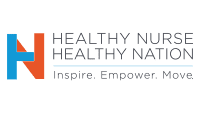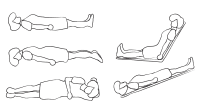Professional role visibility in real time during the nurse–patient interaction


These questions have been on my mind over the past 2 years as the caregiver and a nurse for two family members. I wondered how we could enhance our professional role visibility beyond the media. My experience informed me that we could make it more visible—in real time—in every nurse–patient interaction.
To do so we must think out loud. This requires professional role clarity about the link between a nurse’s individual identity (values, belief, and norms) and the characteristics of a profession. Simply knowing the characteristics isn’t enough; they’re role obligations that must be owned, deeply embedded, and internalized into one’s professional role identity. In this way, we internalize the professional role as a way of being and make it operational in real-time practice.
Professional role obligations are not optional. As a profession, we have the authority and capacity for self-directed decision-making, to generate and use theory, to transfer knowledge, and to introduce new learning in the service and best interest of our patients. These expected behaviors form the structure for us to “think like a professional,” which is foundational to how we “think like a nurse,” and then to effectively actualize our nursing scope of practice, standards, and code of ethics.
What does thinking out loud look like? How do you know if you are successful? I envision that during and after a nurse–patient interaction, the patient would know how your practice specifically helped them in real time and understand the decision process you used to arrive at conclusions about their health status, progress, and plans for their recovery. The patient would understand that you used evidence to substantiate your decision-making process and conclusions, and they would know to whom and why you talked with other team members to obtain a comprehensive picture of their unique situation. In addition, the patient would believe that you listened to how they processed and learned from the information to act in their best interest. Ultimately, each patient would experience our complex thinking process.
Thinking out loud about our professional role obligations demystifies our actions, making them transparent. This visibility is a learning opportunity—patients know the why and how of our decision-making process. It is the opportunity to listen, a professional role obligation linked to transferring knowledge that promotes dialogue with the patient and among the team. This dialogue is more than an exchange of information; it creates an opening for questions and clarifications and shows respect for the patient’s perspective.
Amplifying our professional role as foundational for our nursing practice clarifies the origin of the power and beauty of that role and shows how our practice is more than a sum of tasks. Giving voice to our thinking process leaves our mark in the patient’s experience, which generates a lasting impression of our value as professional nurses.
Maria W. O’Rourke, an American Nurse Journal editorial board member, is president and CEO of Maria W. O’Rourke & Associates, LLC, in Larkspur, California, and volunteer faculty at the UCSF Healthcare Administration Interprofessional Leadership Program and Leadership Institute.
American Nurse Journal. 2024; 19(11). Doi: 10.51256/ANJ112448
References
American Nurses Association. Nursing: Scope and Standards of Practice. 4th ed. Silver Lake, MD: American Nurses Association; 2021.
Loos NM. Nurse listening as perceived by patients: How to improve the patient experience, keep patients safe, and raise HCAHPS scores. J Nurs Adm. 2021;51(6):324-8. doi:10.1097/NNA.0000000000001021
O’Rourke MW. Interprofessional practice: A blueprint for success. Am Nurse J. 2021;16(12):19-22. https://www.myamericannurse.com/interprofessional-practice-a-blueprint-for-success/


















